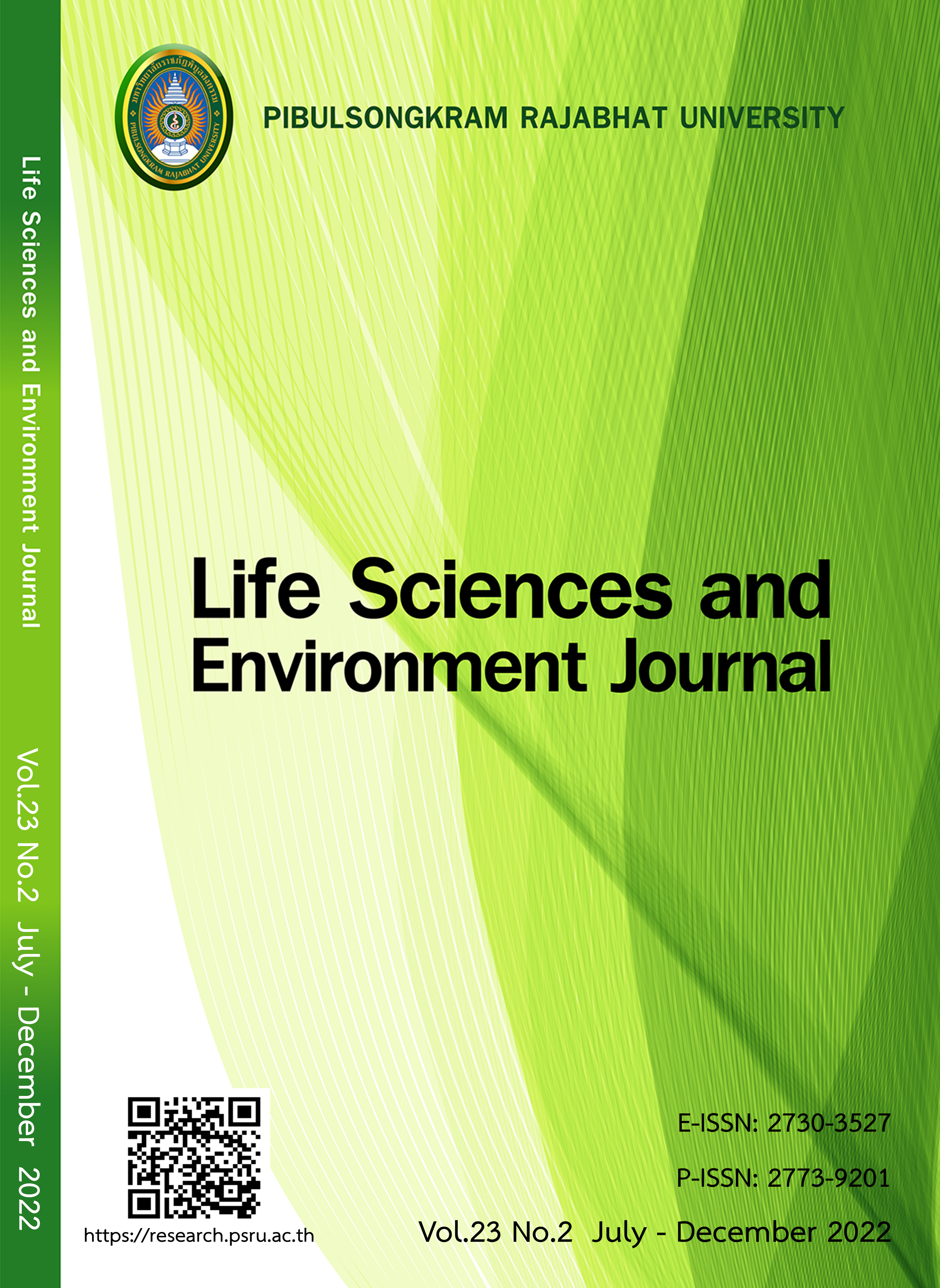EFFECTS OF CASSAVA BASED INTERCROPS WITH THAI-MELON ON WEED CONTROL AND LAND USE EFFICIENCY
DOI:
https://doi.org/10.14456/lsej.2022.23Keywords:
Growth and yield, Cassava, Thai-melon, Mono crop , IntercropAbstract
The purpose of this study was to study the effect of cassava monoculture and cassava-Thai melon intercrop and land use efficiency. The experimental plan was randomized complete block design (RCBD) three treatments, with three replications: mono cassava, cassava-Thai melon intercrop and mono Thai melon. The results showed that the cassava-Thai melon intercrop had no effect on height, leaf weight and fresh root weight. In addition, it was found that in all treatments, there were nine types of weeds. The densities of weeds in monoculture were significantly higher than that of intercrops. The results of Thai melon found that intercrops had a longer stem length than that of mono Thai melon, but the number of branches per plant in intercrops was less than mono Thai melonIn the intercropping, fruit weight was not statistically different from that of monoculture. However, cassava-Thai melon intercrop had higher land equivalent ratio (LER) than monoculture. In conclusion, Thai melons can be intercrop ped in cassava without affecting cassava yield and Thai melon yield. It also helps to mulch the soil in the early stages of cassava growth and reduce the number of weeds.
References
Ahmed F, Hirota O, Yamada Y, Haraguchi T, Matsumoto M, Mochizuki T. Studies on yield, land equivalent ratio and crop performance rate in maize-mungbean intercropping. Journal of the Faculty of Agriculture, Kyushu University 2000;45(1):39-48.
CIAT, Cassava program annual report. Cali, Columbia; 1993.
Finckh R, Gacek S, Goyeau H, Lannou C, Merz U, Mundt C. et al. Cereal variety and species mixtures
in practice, with emphasis on disease resistance. Agronomie 2000;20(7):813-837.
Ikeorgu EG, Oduruke SO, Increasing the productivity of cassava/maize intercrops with groundnuts. Tropical Agriculture 1990;67:164-168.
Jaipala S, Wirojwattanakul K, Srimungkun B, Wannawong O. Effect of glyphosate herbicide spraying period on growth and yield of cassava variety Rayong 11. Thai Agricultural Research Journal. 2012;30(2):186-197.
Kamautom K. Cantaloupe melon. Agricultural Base. Bankok; 1991: 41-45.
Leung H, Zhu Y, Revilla-Molina I, Fan JX, Chen H, Pangga I, Vera Cruz C. et al. Using genetic diversity to achieve sustainable rice disease management. Plant Dis. 2003;87:1156-1169.
Mason SC, Leihner DE, Vost JJ. Cassava-cowpea and cassava-peanut intercropping Nutrient concentrations and removal. Agronomy Journal 1986;78(3):441-444.
Office of Agricultural Economics. 2017. Available at: https://www.oae.go.th/view.phd/id=262. Accessed November 1, 2021.
Polthanee A, Wanapat S, Mangprom P. Row arrangement of peanut in cassavapeanut intercropping:
I. Yield, land use efficiency and economic return. Khon Kaen Agricultural Journal 1998; 26(2):85-91.
Pornsuriya P, Pornsuriya P, Julakasewee A, Chan-udom S, Ruangyuwanon N. Performance of thai melon lines and sweet melon cultivars under multi-environments. Songklanakarin Journal of Plant Science 2016;4(3):19-28.
Krishnamoorthy, Ch. Improved cropping intensity in rainfed land. Paper presented at the seminar held by Upland Crop Division. Department of Agriculture, Bangkok, Thailand; 1978.
Kyaw W, Sungthongwises K, Polthanee A, Kaewrahun S. Growth and yield of peanut intercropping with cassava under rainfed condition at Roi-Et province. Khon Kaen Agricultural Journal. 2011;33(2): 375-379.
Sungthongwises K. Diversity of phosphate solubilizing bacteria under rubber intercropping. Asian Journal of Plant Sciences 2016;15(3-4):75-80.
Takim FO, Advantages of maize-cowpea intercropping over sole cropping through competition indices. Journal of Agriculture and Biodiversity Research 2012;4(1):53-58.
Tindall HD. Vegetable in the tropics. The Macmillan Press Ltd. Print in Hong Kong; 1993.
Wijanarko A, Purwanto BH. Effect of long land use and cropping system on soil fertility and cassava yield. Journal of Degraded and Mining Lands Management 2018;5(4):1327-1334.
Willey RW. Intercropping-its importance and its research needs, part I. Competition and yield advantages. Filed Crop Abstracts 32, 1979; 1-10.
Downloads
Published
How to Cite
Issue
Section
License
Copyright (c) 2022 Life Sciences and Environment Journal

This work is licensed under a Creative Commons Attribution-NonCommercial-NoDerivatives 4.0 International License.
Each article is copyrighted © by its author(s) and is published under license from the author(s).









